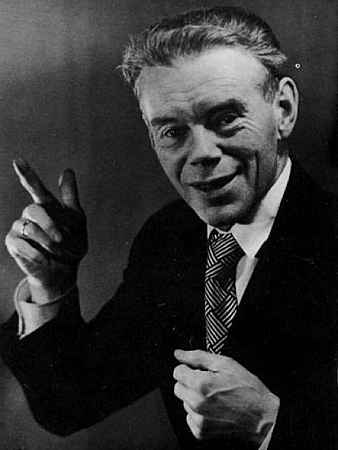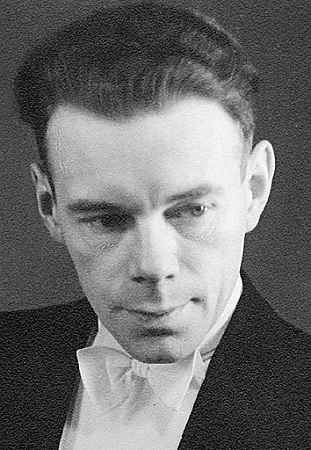If one disregards composers such as Sveinbjörn Sveinbjörnsson, Jón Leifs and Þórarinn Jónsson who mostly worked abroad, one can argue that Icelandic instrumental music was not born before the Second World War. Instrumental ensembles, often small wind orchestras, had existed in different part of the country for decades, but it was not until around 1940 that one can see the beginnings of compostion in an idiomatic fashion for instruments of both chamber and orchestral format.
A new sort of composer appeard during this time. Professionally schooled orchestral musicians, who also were active as musicians, conductors and teachers in every layer of the musical scene replaced the church musicians, ideaologist and amateurs of the preceding years. They did not make an impact as great innovators, but by tackling the growing, new medium they did contribute to the pioneer work.
Karl O Runólfsson (1900-1970) was one such musician. He began working as a printer´s apprentice, but at the age of twenty-five he travelled to Copenhagen and studied the trumpet, violin, and wind band arrangement. He later studied compostion with Franz Mixa and Victor Urbancic in Reykjavík. Karl O. Runólfsson was the leader of a number of different amateur orchestras in Reykjavík, but he also travelled around the country working with choirs and ensembles. Flouting the then undeveloped communication system, he worked in Ísafjörður, Akureyri and Hafnarfjörður, which was quiet an achievement at that time. His work from this time survives, documented in the form of a redording made in 1933 with the male choir Geysir and the Akureyri orchestra. The work is Förumannaflokkar þeysa, a piece that was very popular among Iceland´s male choirs. Later on he was appointed trumpeter in the Iceland Symphony Orchestra.
Karl O. Runólfsson composed a good deal of vocal music during the early decades, including a number of often performed songs. In 1939, however, he wrote an orchestral suite whose very title proclaimed a new era in his composing. The work, Á krossgötum ( At the Crossroads), shows the composer´s awareness that he stood at an artistic crossroads where at least one way - that of the illusive orchestra - would lead to unknown goals. The symbolism can naturally be extended to imply the whole of Iceland´s musical situation. Á krossgötum is not merely a conventional orchestral work. Its modal and at times rather oriental flavoured melodic lines and its ostinato techniques can remind one of Carl Nielsen. Its orchestration places the winds at the centre and gives the precussion an independent role.
Karl O. Runólfsson also composed incidental music to a number of plays, including Jón Arason and the drama Eyvind of th Hills by Jóhann Sigurjónsson. The overture to the latter play is an important and effective work for orchestra, distinguished by clear orchestration and dramatic contrasts. Once again the brass section is given a major role. Karl O. Runólfsson cultivated a rather mild national romanticism which may be seen in works such as Sex Vikivakar (orchestrated folk dances), the symphonic work ESJA (named for the mountain north of Reykjavík), several arrangements of folk songs for different intrumental combinations, and his otherwise neo-classicist Trumpet Sonata. The final movement of the latter work is entitled Rímnarondo and is based on rímur with characteristic varying time signatures.
(Göran Bergendal: from New Music in Iceland, pub..Iceland Music Information Centre 1991)




